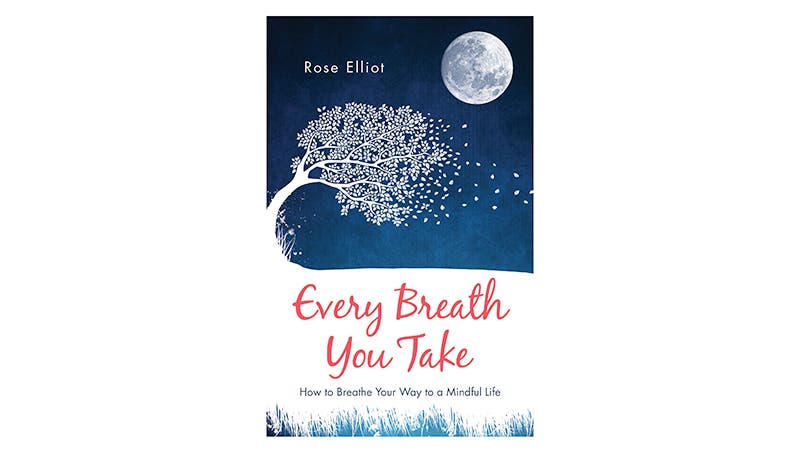If you buy through our links, we may earn an affiliate commission. This supports our mission to get more people active and outside.Learn about Outside Online's affiliate link policy
Feel the Feels: A Mindful Breathing Practice for Tough Emotions

Like many people, I had heard about mindfulness. I knew that it meant paying attention, opening our awareness to what is happening in the present moment, and accepting it without judging or trying to control it.
I also knew that practicing mindfulness has been shown to have many benefits—more peace, energy, self-confidence, less stress, depression, and anxiety, and fewer aches and pains—and I wanted to experience some of those for myself. However, much as I tried, I struggled with the practice. I found it dreary, dull, and boring—all that “notice-what-you’re-doing-while-you-clean-your-teeth”—I just couldn’t get to grips with it at all. I know that the experts say that when done correctly mindfulness is never boring, but it was for me. I kept trying, but I just couldn’t sustain it.
Getting Hooked on Mindfulness
When I was on the point of giving up altogether, I met a monk—an experience that I described in my book, I Met A Monk—and he suggested that it is helpful to link mindfulness practice to breathing. This really helped. In fact, it helped so much that I decided to do some research on mindfulness. What I discovered nearly took my breath away, if I can say that.
I found that, in its original form, mindfulness was actually based on our breathing; the breath was an intrinsic part of it. Mindfulness can be described as a breathing meditation. When you practice mindfulness with the breath, what might have been a dull, boring, and mechanical practice can suddenly come alive. It is like putting gas in your tank or the wind beneath your sails.
Practicing mindfulness using your breath as the starting point and the focus not only opens your awareness to the present moment, which is what mindfulness is all about, but it can also naturally put you in touch with more peace, joy, strength—and, dare I say it, wisdom—which you may never have known you had. It can also naturally lead into a meditation practice. Once you know how to practice breathing meditation, you can do it anywhere, any time, any place; it can be like accessing a portal to your inner self whenever you need to.
Defining Mindful Breathing
Being mindful of your breath simply means observing and opening your awareness to your breath: to your breathing in and your breathing out, without controlling or judging it in any way: letting it be. That’s it.
Once you’ve become more accustomed to breathing mindfully, you can practice combining your breathing with whatever you are doing to help you transition into a mindful state of being. The practice can become a part of your daily life.
However, when you’re learning mindfulness breathing it’s best to do it sitting comfortably in a quiet place with your eyes closed. This is so that you can focus on your breathing without any distractions. It doesn’t have to take long to get the feel for it. Start with one to two minutes of practice two to three times a day. You can work toward taking mindful breaths without closing your eyes. Over time, it might start to feel as if you can “click into” mindfulness mode any place, any time.
Once you know how to breathe mindfully, you can use the practice to help you through challenging times. It’s not about denying feelings or changing them; it’s accepting them exactly as they are, while opening awareness to the calming quality of our breath.
A Mindful Breathing Exercise to Feel Calmer
When you’re going through a sad or worrying time, it’s natural to think of the hours, days, and even years stretching ahead, and wonder, “How can I ever go on like this?’”I caught myself thinking that the other day, and then I suddenly remembered: when we’re ‘in the now’, there is only this moment, this breath; all we have to do is to be mindful of this one breath. Feel the peace and comfort of that—and then take another breath.
You can practice what’s often called the Buddha’s breathing exercise in which the breath is used to calm and soothe. We are not denying our feelings, we are not trying to change them; we are accepting them exactly as they are, while we open our awareness to the calming quality of our breath.
Try It
- Close your eyes and take a breath, feeling the air going in through your nostrils, into your body, and out of your nose.
- Breathe in and say to yourself, “Breathing in, I calm the feelings I am experiencing now.” Breathe out and say to yourself, “Breathing out, I calm the feelings I am experiencing now.”
- Allow yourself to feel the feelings; let them be there. Open your awareness to the breath going in, and the breath going out; only focus on this: breath in, breath out…
Let the breath take its course, don’t control it in any way; just notice it. - Let your in-breath and your out-breath fill your mind…that is being mindful of your breath. Keep noticing your in-breath, your out-breath. Feel the breath soothing you…comforting you…nurturing you. Feel the peace this brings.
- Now surrender the issue that is concerning you to this inner peace, to your mindfulness: let the problem go.
- Keep breathing, noticing your in-breath and your out-breath.
- When the worry or the feeling comes back into your mind and troubles you, repeat the process, noticing and feeling your in-breath and your out-breath. Let your breath fill your mind.
- Keep gently repeating this process whenever the worry or the feeling comes back, until eventually it fades away.
When you have a problem, being mindful can help you surrender the issue and be open to the idea that things will work out. You may unexpectedly meet someone, see something, or get inspired; a new direction may come to you out of the blue. Trust your process, and trust the power of mindfulness.

Adapted from Every Breath You Take © Rose Elliot 2016, published by Watkins, London, Paperback.
This article has been updated. Originally published December 15, 2016.